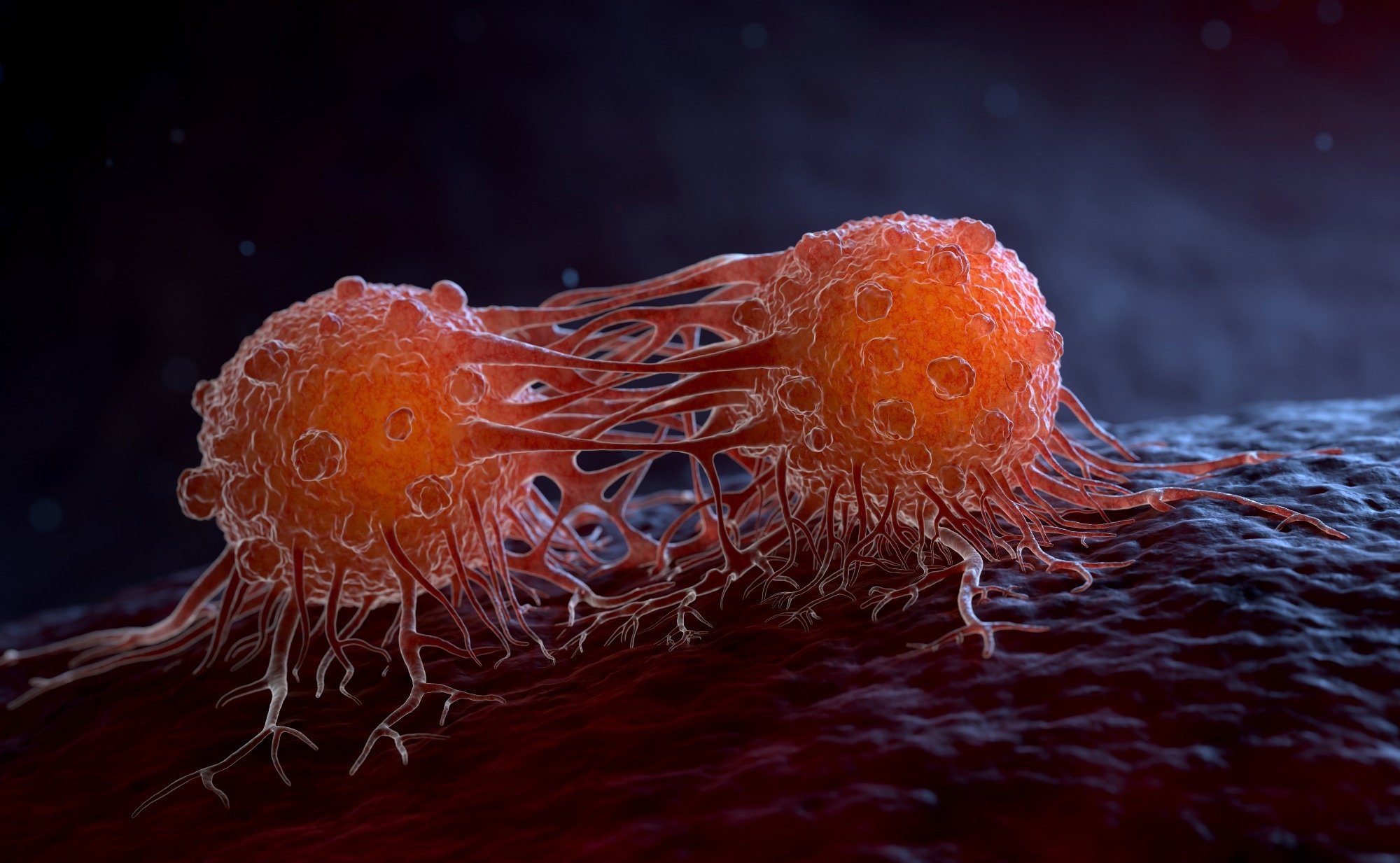New research shows that early switching to camizestrant based on ctDNA detection of ESR1 mutations can keep breast cancer at bay longer, delivering hope for patients facing resistance to standard treatments.
 Study: First-Line Camizestrant for Emerging ESR1-Mutated Advanced Breast Cancer. Image Credit: Tatiana Shepeleva / Shutterstock
Study: First-Line Camizestrant for Emerging ESR1-Mutated Advanced Breast Cancer. Image Credit: Tatiana Shepeleva / Shutterstock
In a recent study published in The New England Journal of Medicine, a group of researchers evaluated whether switching to camizestrant improves progression-free survival in Estrogen Receptor 1 (ESR1)-mutated advanced breast cancer patients.
Background
Nearly 40% of patients with advanced breast cancer develop ESR1 mutations during first-line treatment, reducing the effectiveness of standard therapies. Hormone receptor-positive and human epidermal growth factor receptor 2 (HER2)-negative breast cancer is the most common type and is usually treated with an aromatase inhibitor and a cyclin-dependent kinase 4 and 6 (CDK4/6) inhibitor, but resistance often develops.
Camizestrant, a next-generation oral selective estrogen receptor degrader (SERD), directly degrades the estrogen receptor, targeting the core mechanism of resistance. Unlike aromatase inhibitors, it works even when ESR1 mutations are present. This approach holds promise for maintaining treatment efficacy for a longer period. However, the optimal timing and long-term impact of this strategy require further research.
The original study population had limited racial diversity, with few Black patients enrolled, and all participants remained on the same CDK4/6 inhibitor throughout the study.
About the study
The Selective Estrogen Receptor degrader Evaluation in ESR1-mutant Advanced breast cancer using circulating tumor DNA Assessment (SERENA-6) trial was a phase 3, double-blind, randomized study. It enrolled adult patients with estrogen receptor-positive, HER2-negative advanced breast cancer. All patients had received at least six months of treatment with an aromatase inhibitor plus a CDK4/6 inhibitor without clinical progression.
Patients were monitored every two to three months using circulating tumor DNA (ctDNA) testing to detect emerging ESR1 mutations. Those who tested positive for ESR1 mutations but had no radiologic evidence of disease progression were eligible for randomization. Patients were randomly assigned in a 1:1 ratio to either continue with their current aromatase inhibitor plus CDK4/6 inhibitor or switch to camizestrant (75 mg orally once daily) while maintaining the same CDK4/6 inhibitor.
Stratification was based on the site of metastasis (visceral or non-visceral), time since treatment initiation, and the specific CDK4/6 inhibitor used (palbociclib, ribociclib, or abemaciclib). Tumor assessments were conducted using computed tomography (CT) or magnetic resonance imaging (MRI) every eight weeks for the first 18 months, then every 12 weeks thereafter.
The primary outcome measured was progression-free survival as assessed by the investigators. Secondary outcomes included second progression-free survival, overall survival, quality of life as measured by the European Organization for Research and Treatment of Cancer 30-item questionnaire, and safety.
About the study
Out of 3256 patients screened for ESR1 mutations, 548 tested positive, and 315 were enrolled in the randomized portion of the trial. Of these, 157 were assigned to the camizestrant group and 158 to continue with aromatase inhibitors. Both groups continued their prior CDK4/6 inhibitors without changes in dosage.
At a median follow-up of 12.6 months, progression-free survival was 16.0 months in the camizestrant group compared to 9.2 months in the aromatase inhibitor group. The hazard ratio for disease progression or death was 0.44, demonstrating a 56% reduction in risk. Notably, 29.7% of patients receiving camizestrant remained progression-free at 24 months, compared to only 5.4% in the control group.
The benefits extended to quality of life, with patients receiving camizestrant experiencing a longer median time before deterioration in global health status (23.0 months versus 6.4 months). This finding supports the therapy’s ability to delay disease progression and maintain daily functioning and well-being.
Subgroup analysis confirmed consistent results across age groups, menopausal status, disease sites, and ESR1 mutation types. Adverse events were consistent with the known safety profiles of CDK4/6 inhibitors. Grade 3 or higher adverse events were more frequent in the camizestrant group (60.0% vs. 45.8%), mainly due to hematologic toxicity such as neutropenia (54.8% vs. 44.5%). Most events were manageable and rarely led to treatment discontinuation.
Photopsia (brief flashes of light) was reported in 20.0% of camizestrant-treated patients, compared to 7.7% in the control group. These events were mostly mild and did not impair daily activities. Serious adverse events were infrequent, occurring in 10.3% and 12.3% of patients in the camizestrant and control groups, respectively. Treatment discontinuation due to adverse events was rare, occurring in 1.3% of the camizestrant group and 1.9% of the aromatase inhibitor group.
Overall survival data remain immature and not yet conclusive. The optimal frequency and duration of ctDNA monitoring for ESR1 mutations also require further investigation.
Conclusions
In summary, switching to camizestrant in patients with ESR1-mutated advanced breast cancer who have not yet shown clinical progression leads to significantly improved progression-free survival and delays deterioration in quality of life. However, overall survival data remain immature, and further research is warranted to optimize biomarker-driven intervention strategies and ensure broader applicability.
The study underscores the value of ctDNA testing for early detection of resistance, allowing clinicians to intervene before overt progression. Camizestrant extended progression-free survival by nearly seven months compared to continued aromatase inhibitor therapy and significantly delayed the deterioration of quality of life.
These findings support a new strategy in managing hormone receptor-positive advanced breast cancer, moving away from a reactive approach and toward proactive, biomarker-guided therapy. Camizestrant was well tolerated, and its favorable safety profile, coupled with strong clinical benefits, suggests it could become a new standard of care for patients with emerging ESR1 mutations.